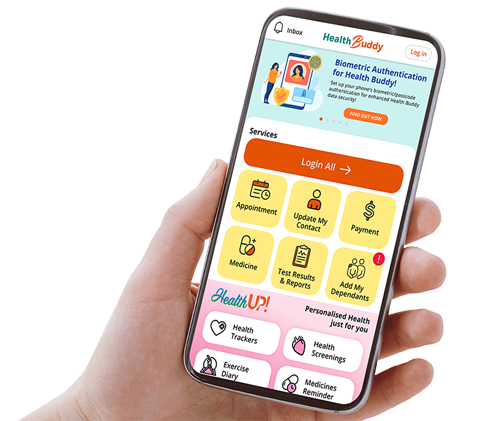National Neuroscience Institute will NEVER ask you to transfer money over a call. If in doubt, call the 24/7 ScamShield helpline at 1799, or visit the ScamShield website at www.scamshield.gov.sg.
Catheter Angiography (CA)
A catheter angiography (CA) is a minimally invasive test that uses x-rays and a contrast material to produce pictures of blood vessels for diagnosis and treatment.
Angiograms are done to detect or confirm abnormalities within the blood vessels in the brain, including:
- An aneurysm, bulge or sac that develops in an artery due to weakness of the arterial wall
- Arteriovenous malformation, a tangle of dilated blood vessels that disrupts normal blood flow in the brain
- Carotid stenosis, narrowing of the carotid arteries
- Brain tumour
- Blood clot
- Vasculitis, an inflammation of the blood vessels
- Vascular dissection, a tear in the artery wall
- Stroke
- Evaluation of arteries of the brain and neck before surgery
- In preparation for minimally invasive treatment of a vessel abnormality
- Additional information on abnormalities seen on Magnetic Resonance Imaging (MRI) or Computed Tomography (CT) scans
Frequently Asked Questions
How should I prepare for the procedure?
- Inform our staff if you are/have:
- Pregnant
- Any allergies, especially to contrast materials or anaesthetic medications
- You may be advised to stop certain medications like aspirin and blood thinners
- Do not eat or drink for 4 to 6 hours before the test
- Breastfeeding patients may consider pumping milk ahead of time
- Have a relative or friend accompany you
What to expect during the procedure?
- Your doctor would have discussed this test with you in advance and a written consent will be needed
- Before the test, empty your bladder
- Devices will be used to monitor your blood pressure, breathing and heart rate
- Next, you will be asked to lie down where your groin area is shaved and cleaned. You will be covered from
the shoulders down with a sterile drape - Local anaesthetic will be given at the groin

Figure 1 Preparation for CA
- A small cut is made in the skin for a long, thin and hollow plastic tube (catheter) to be inserted
- Contrast material is injected through the catheter. You may feel a hot sensation and a metallic taste in your
mouth that lasts a few seconds - Images are taken using x-rays
- After the test, the catheter is removed and the wound is bandaged
- The test may take up to an hour but may vary. Remain still throughout the test
What happens after the procedure?
- You will be sent to your ward
- For the next 6 hours, lie down and keep your legs straight to prevent bleeding from the wound
- Inform the nurse if there is bleeding, swelling or pain at the site where the catheter was inserted
- You may resume your normal diet immediately or as advised by your doctor
- You may engage in light activities 6 hours after the test, but avoid exercise and strenuous activities for 3 days
Other procedures may follow after a CA:
Embolisation
- Closing the aneurysm by filling it with a material (coil, or flow-diverting stent) to reduce the risk of bleeding
- Blocking abnormal blood vessels to reduce blood supply in patients with tumour before surgery

Figure 2 Closing an aneurysm sac by filling it with a coil
Endovascular Therapy
- Non-surgical treatment for the sudden loss of brain function due to blood clots
Carotid Stenting
- Deployment of a metal mesh tube (stent) into the carotid artery to treat narrowing of the vessel and decrease the risk of stroke

Figure 3 Stent in vessel
What are the benefits, risks and limitations?
Benefits
- No radiation remains in the body after the scan
- Usually no side effects
- Use of a catheter makes it possible to combine diagnosis and treatment in a single procedure
- Detailed, clear and accurate images of blood vessels in the brain
- May produce more accurate results than a Carotid Doppler Ultrasound or other non-invasive methods
Risks
- Bruising/bleeding at the wound
- Injury to the blood vessel
- Kidney damage in patients with impaired kidney function
- Allergy to contrast medium
- Infection
- Stroke if the catheter dislodges plaque from a vessel wall that blocks blood flow within the brain, but it is rare
Limitations
- Patients with impaired kidney function and/or allergy to contrast materials may not be suitable for this test
- Pregnant patients are advised not to have a CA unless necessary
Keep Healthy With
© 2025 SingHealth Group. All Rights Reserved.
















